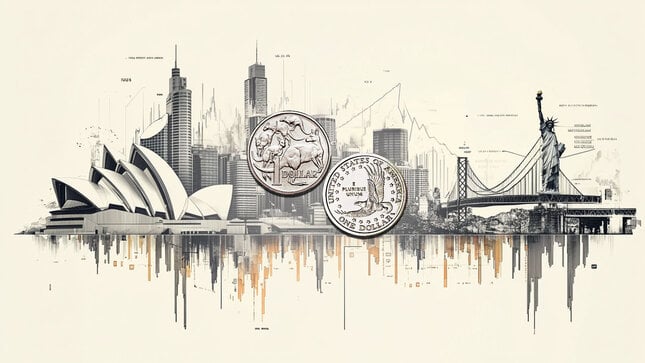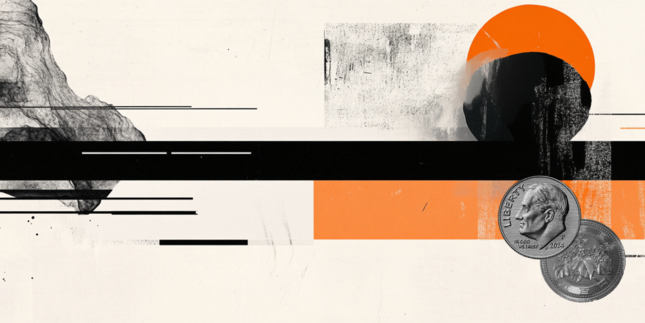Central bankers and bureaucrats are seizing on recent turmoil in cryptocurrency markets to push aggressively for central bank digital currencies (CBDCs).
They made their case to other global elites gathered in Davos on Monday for the World Economic Forum’s annual meeting.
Kristalina Georgieva, managing director of the International Monetary Fund, said, “Bitcoin may be called a coin, but it’s not money. It’s not a stable store of value.”
A governor with the Central Bank of France agreed and added, “Cryptocurrencies are not a reliable means of payment. Someone must be responsible for the value, and it must be accepted universally as a means of exchange.”
The solution, they say, is CBDCs. Digital currencies issued by central banks, recognized officially by governments, and circulated into the economy in partnership with large commercial banks would supposedly represent safe, secure, and stable digital money.
Unfortunately, privately issued crypto tokens backed by nothing are indeed fraught with risks. Many cryptocurrencies, including even some branded as “stablecoins,” have proven to be massive failures or outright scams.
The Luna token, which was touted as being pegged to the U.S. dollar via TerraUSD, turned out to be pegged to zero – or close to it. Luna recently crashed by over 99% to wipe out $40 billion in digital fantasy wealth as the supply of the tokens hyperinflated.
Meanwhile, Bitcoin evangelists decry alt-coin shenanigans and insist only Bitcoin can function as a true global decentralized digital currency. But Bitcoin, being rarely used in everyday transactions, is functioning more as a pure speculation – one that is losing value to other currencies including gold so far in 2022.
Anyone who holds Bitcoin or any other crypto via an online exchange should be aware that in addition to price risk, they are assuming enormous counterparty risk.
Several years ago, the then leading exchange Mt. Gox imploded. Hundreds of thousands of Bitcoins were lost or stolen in the Mt. Gox fiasco.
The current leading crypto exchange is Coinbase. It has been beset by deteriorating financials amid the broader tech sector rout. If it were to fail, the assets of customers would be at risk.
Coinbase disclosed in a recent regulatory filing: “Because custodially held crypto assets may be considered to be the property of a bankruptcy estate, in the event of a bankruptcy, the crypto assets we hold in custody on behalf of our customers could be subject to bankruptcy proceedings.”
Would a proposed CBDC, “Fedcoin,” be the solution to such risks?
Not if preserving purchasing power is the goal! A digital dollar issued by the Federal Reserve would make it even easier (and more tempting) for Washington D.C. to grow the supply of dollars at will.
Fedcoin wouldn’t be “a stable store of value” as the IMF describes. Fed Chairman Jerome Powell has even admitted that with inflation at 40-year highs, the central bank is failing to meet its own mandate of price stability.
Neither central bankers nor the issuers of various unbacked digital coins that gyrate wildly are serious about establishing sound money. If they were, they would tie their currencies to something with tangible value that cannot be destroyed – like gold.
Although gold’s near-term value does fluctuate in terms of fiat currencies and other assets, over time it retains its purchasing power. No government-issued currency has gold’s centuries’ long track record of being trusted as the ultimate money. And needless to say, no newfangled cryptocurrency can be guaranteed to hold any value over any period.
Investors should be aware, though, that they can be vulnerable to scams and counterparty risks if they aren’t careful about how they attain exposure to gold and/or silver. If they can’t hold it in physical form, they may not really own it.
There are plenty of paper derivative products tied to precious metals’ prices, including exchange-traded funds, futures, and deceptively marketed unallocated bullion “accounts.” In the event of a financial crisis or bankruptcy by a custodian, these instruments can potentially implode.
The most direct way to own physical bullion is, of course, to take possession of it and store it in a home safe.
It’s certainly a good idea to have immediate access to some gold and silver coins in the event of an emergency.
But bullion holders can attain a higher level of protection against threats such as burglary and natural disaster by also storing some of their precious metals at a highly secure vault.
Any bullion stored on your behalf at a depository should be held under a bailment-type storage agreement, segregated from the assets of other customers (i.e., not pooled or co-mingled), and fully insured.
Hard money is the real alternative to both digital coin schemes and value-destroying inflation generated by central banks.
Money Metals Exchange and its staff do not act as personal investment advisors for any specific individual. Nor do we advocate the purchase or sale of any regulated security listed on any exchange for any specific individual. Readers and customers should be aware that, although our track record is excellent, investment markets have inherent risks and there can be no guarantee of future profits. Likewise, our past performance does not assure the same future. You are responsible for your investment decisions, and they should be made in consultation with your own advisors. By purchasing through Money Metals, you understand our company not responsible for any losses caused by your investment decisions, nor do we have any claim to any market gains you may enjoy. This Website is provided “as is,” and Money Metals disclaims all warranties (express or implied) and any and all responsibility or liability for the accuracy, legality, reliability, or availability of any content on the Website.
Recommended Content
Editors’ Picks

AUD/USD stays heavy under 0.6150 after China's inflation data
AUD/USD is deep in the red below 0.6150 in Thursday's Asian trading, reversing the previous recovery led by US President Trump's decision for an immediate 90-day tariff pause for many countries. However, escalaitng US-China trade war and Chinese disinflation remain a drag on the Aussie pair.

USD/JPY tumbles below 147.00, awaits US CPI for fresh impetus
USD/JPY has come under intense selling presure and drops below 147.00 in the Asian session on Thursday. The US-China trade war escalation and the divergent BoJ-Fed policy expectations underpin the Japanese Yen and weigh heavily on the pair amid a renewed US Dollar downtick. US CPI awaited.

Gold sticks to gains near $3,1000 amid escalating US-China trade tensions
Gold price extends the previous rebound to trade near $3,100 in the Asian session on Thursday. The safe-haven demand amid escalating trade tensions between the United States and China provides some support to the precious metal but the further upside appears elusive ahead of US CPI data.

Senate approves Paul Atkins as new SEC Chair
The Senate voted 52-44 on Wednesday to approve Paul Atkins as the new SEC Chair. The news could improve sentiment in the crypto market, considering Atkins has previously advocated for better crypto regulations and served as an advisor to crypto companies.

Tariff rollercoaster continues as China slapped with 104% levies
The reaction in currencies has not been as predictable. The clear winners so far remain the safe-haven Japanese yen and Swiss franc, no surprises there, while the euro has also emerged as a quasi-safe-haven given its high liquid status.

The Best brokers to trade EUR/USD
SPONSORED Discover the top brokers for trading EUR/USD in 2025. Our list features brokers with competitive spreads, fast execution, and powerful platforms. Whether you're a beginner or an expert, find the right partner to navigate the dynamic Forex market.